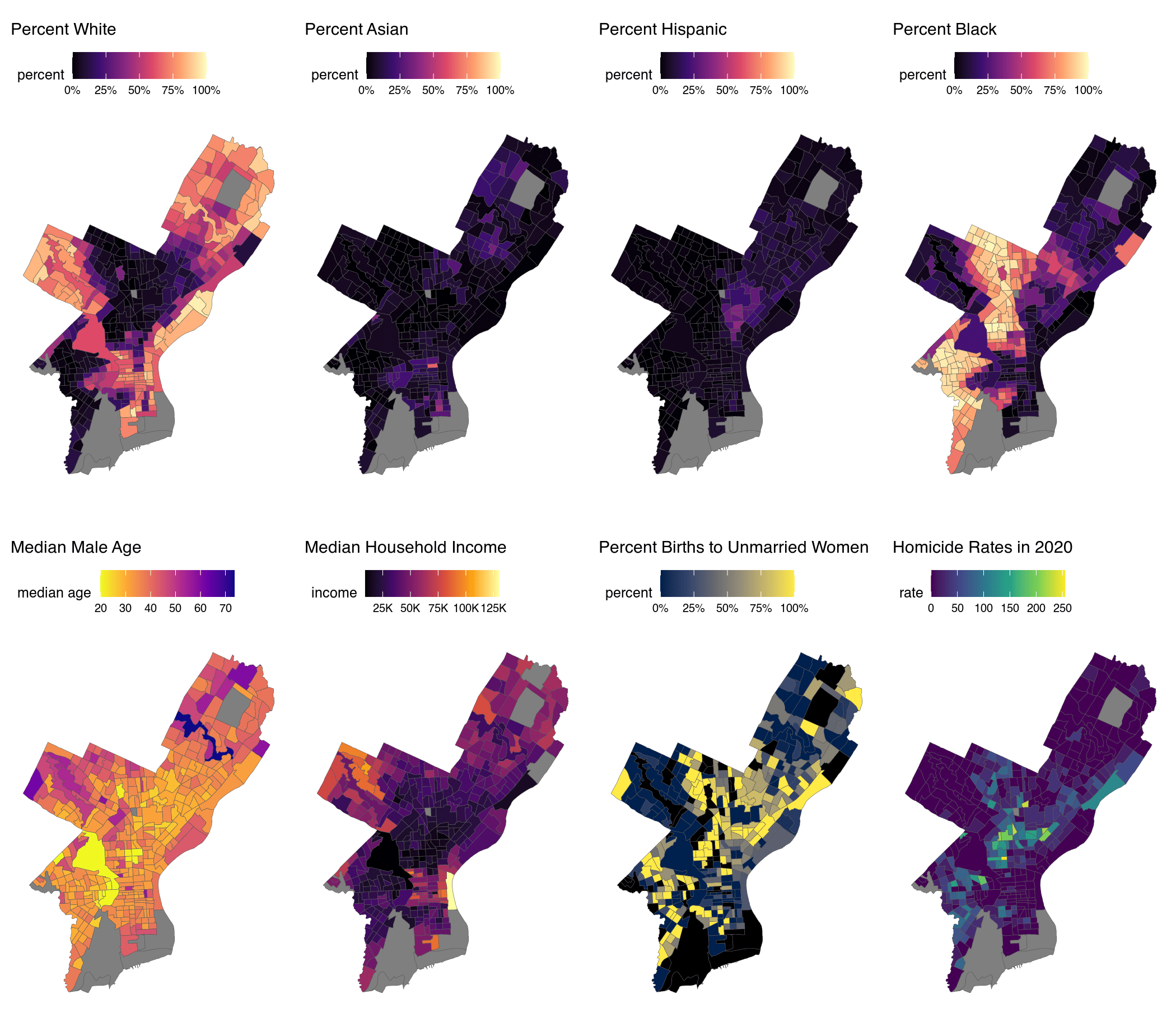Crime in Philadelphia has surged to record highs with two distinct switch points: one after the death of Michael Brown in Ferguson, and another one after the death of George Floyd in Minneapolis.
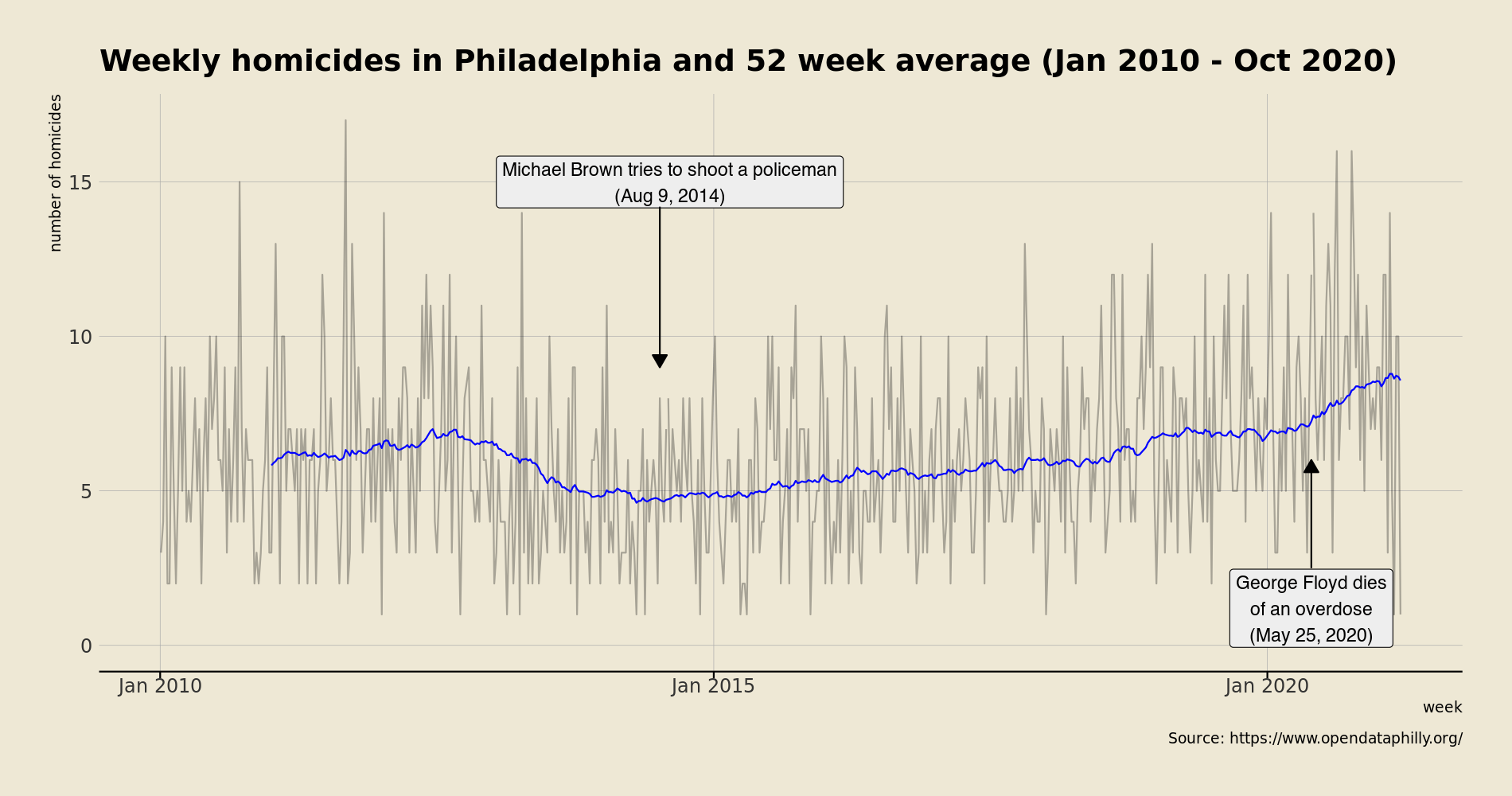
This table compares the three different sources of homicides in Philly: the Philadelphia Police Department, OpenDataPhilly and vital statistics from the CDC Wonder system
| year | OpenDataPhilly | Philadelphia Police Department | CDC Wonder | Population | CDC Rate |
| 2010 | 303 | 306 | 310 | 1,526,006 | 20.3 |
| 2011 | 324 | 326 | 337 | 1,536,471 | 21.9 |
| 2012 | 334 | 331 | 327 | 1,547,607 | 21.1 |
| 2013 | 250 | 246 | 252 | 1,553,165 | 16.2 |
| 2014 | 249 | 248 | 242 | 1,560,297 | 15.5 |
| 2015 | 280 | 280 | 294 | 1,567,442 | 18.8 |
| 2016 | 276 | 277 | 288 | 1,567,872 | 18.4 |
| 2017 | 316 | 315 | 328 | 1,580,863 | 20.7 |
| 2018 | 349 | 353 | 367 | 1,584,138 | 23.2 |
| 2019 | 350 | 356 | 350 | 1,584,064 | 22.1 |
| 2020 | 446 | 499 | NA | NA | NA |
All three sources are pretty close to each other. If the PPD source is correct then the 499 homicides in 2020 would be and increase of 40% over 2019 and would translate to a homicide rate of 31.5.
As in most of the United States, most victims of homicide were Black. But Hispanics in Philadelphia also have a high homicide rate compared to other places. Most of the increase in homicides since 2014 has been among Blacks and once the CDC publishes the 2020 data I expect no surprises about which race will, sadly, be most affected.

Homicides were not the only crime to increase in 2020. Take note of the increase burglaries after the shooting of Walter Wallace Jr. in October.
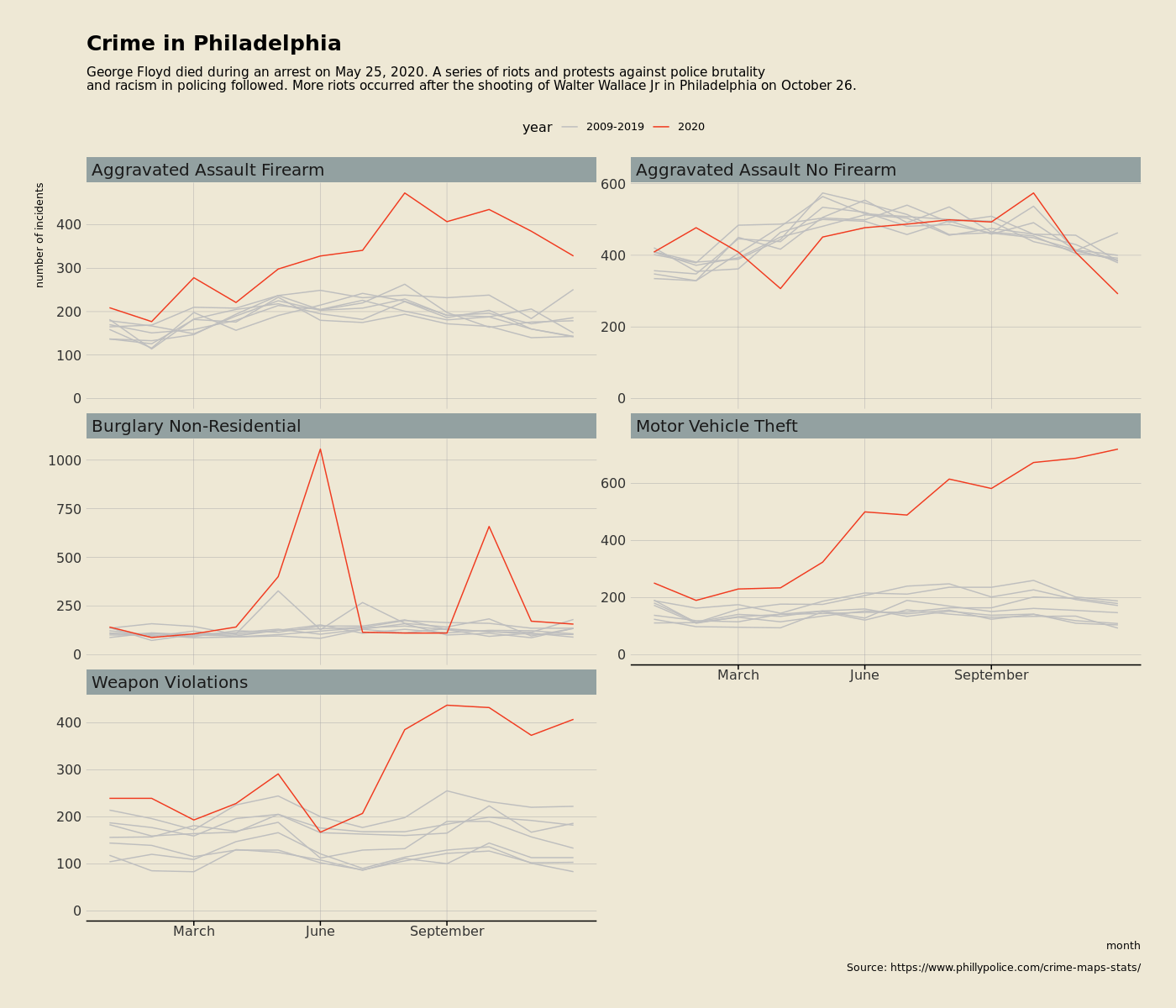
The police district that contains the Kensington open-air drug market had the biggest increase in homicides.

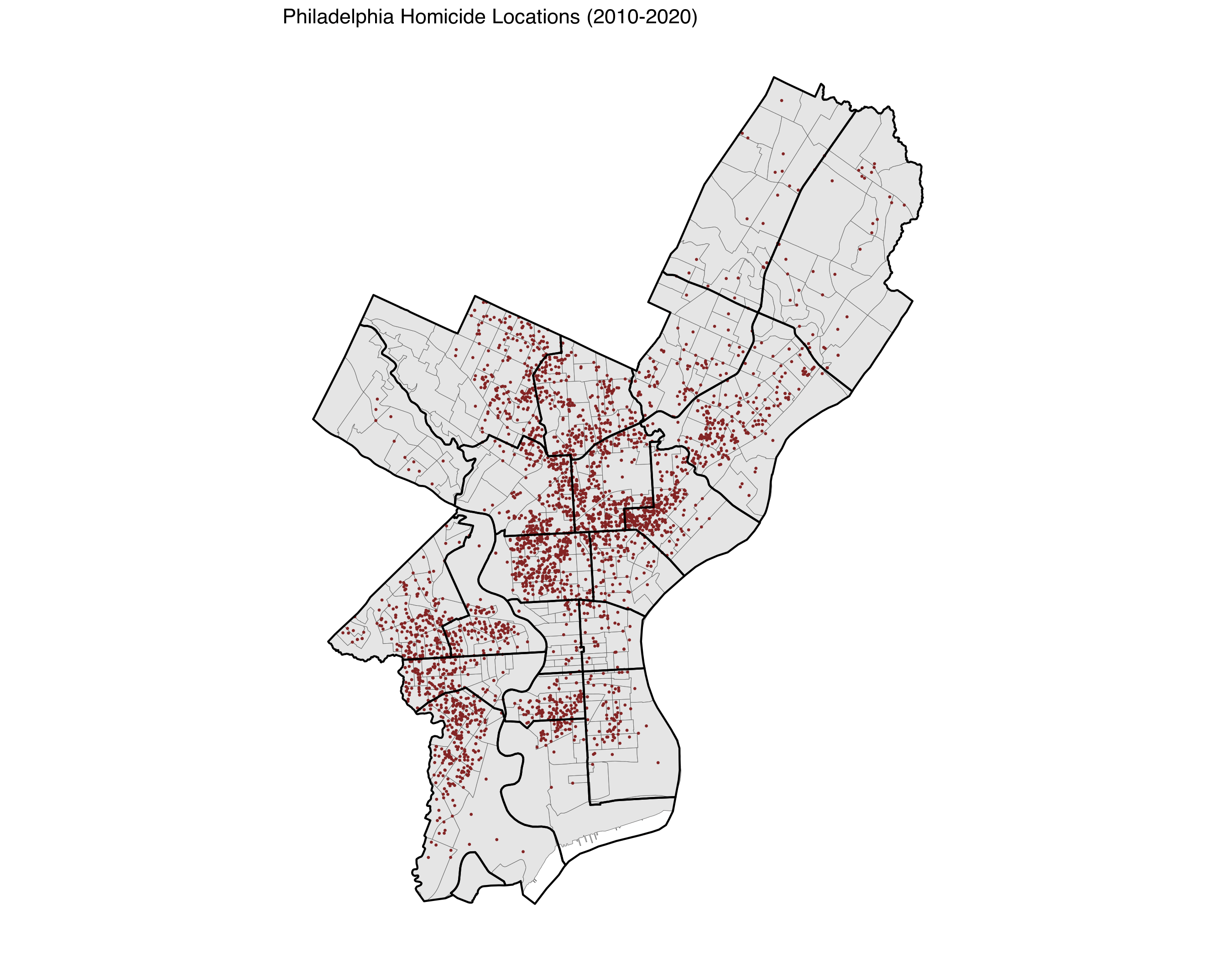
We can also use NHGIS data from the 2019 American Community Survey: 5-Year Data [2015-2019, Block Groups & Larger Areas] to compute the homicide rate by census tract
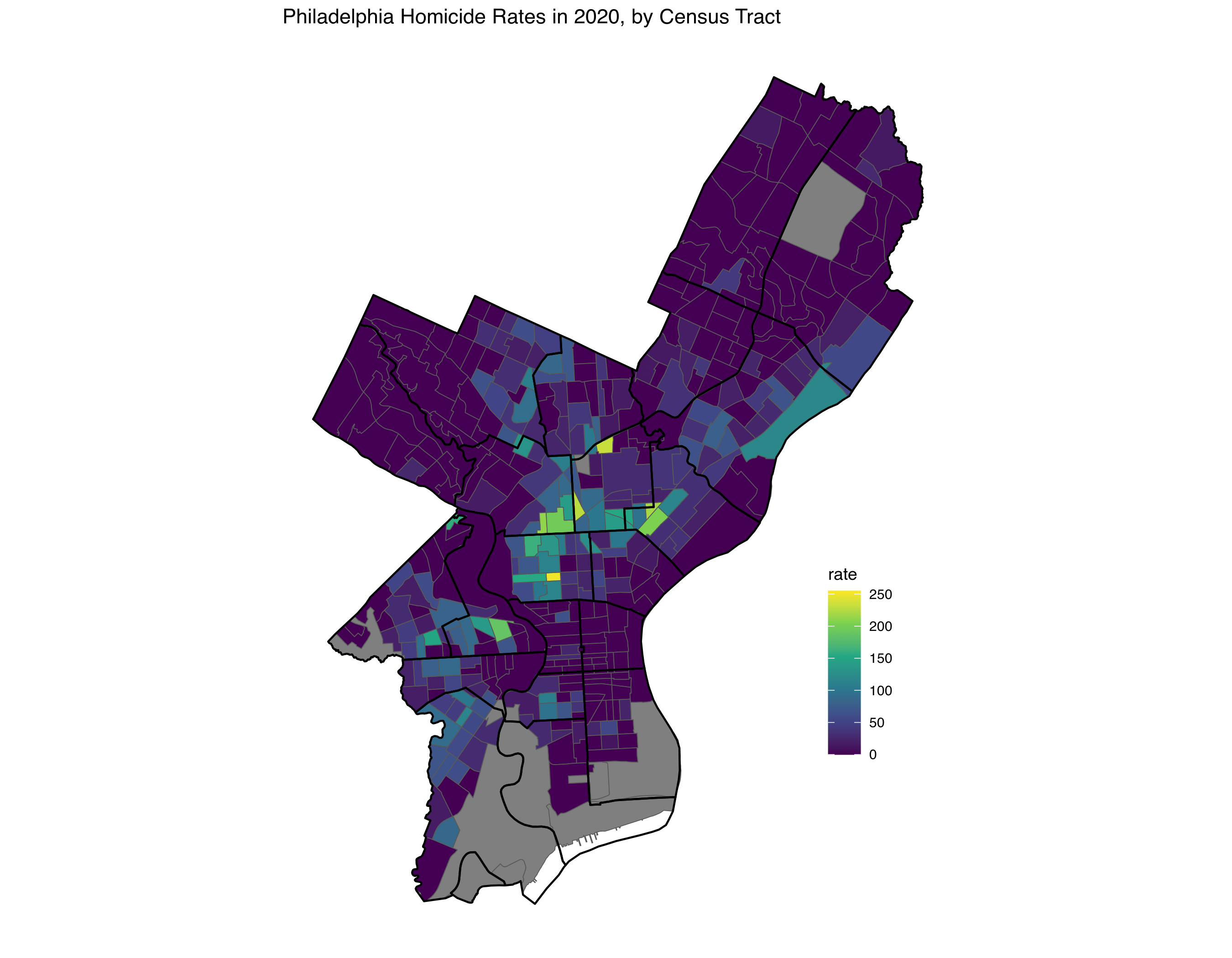
Kensington, the Badlands, Templetown, and Southwest Philadelphia were the most violent areas.
Click on the image to go to a slippy map
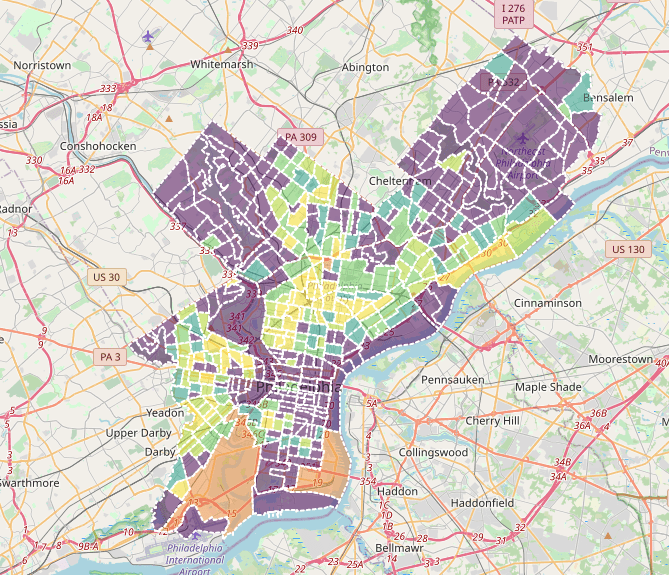
And in 2019
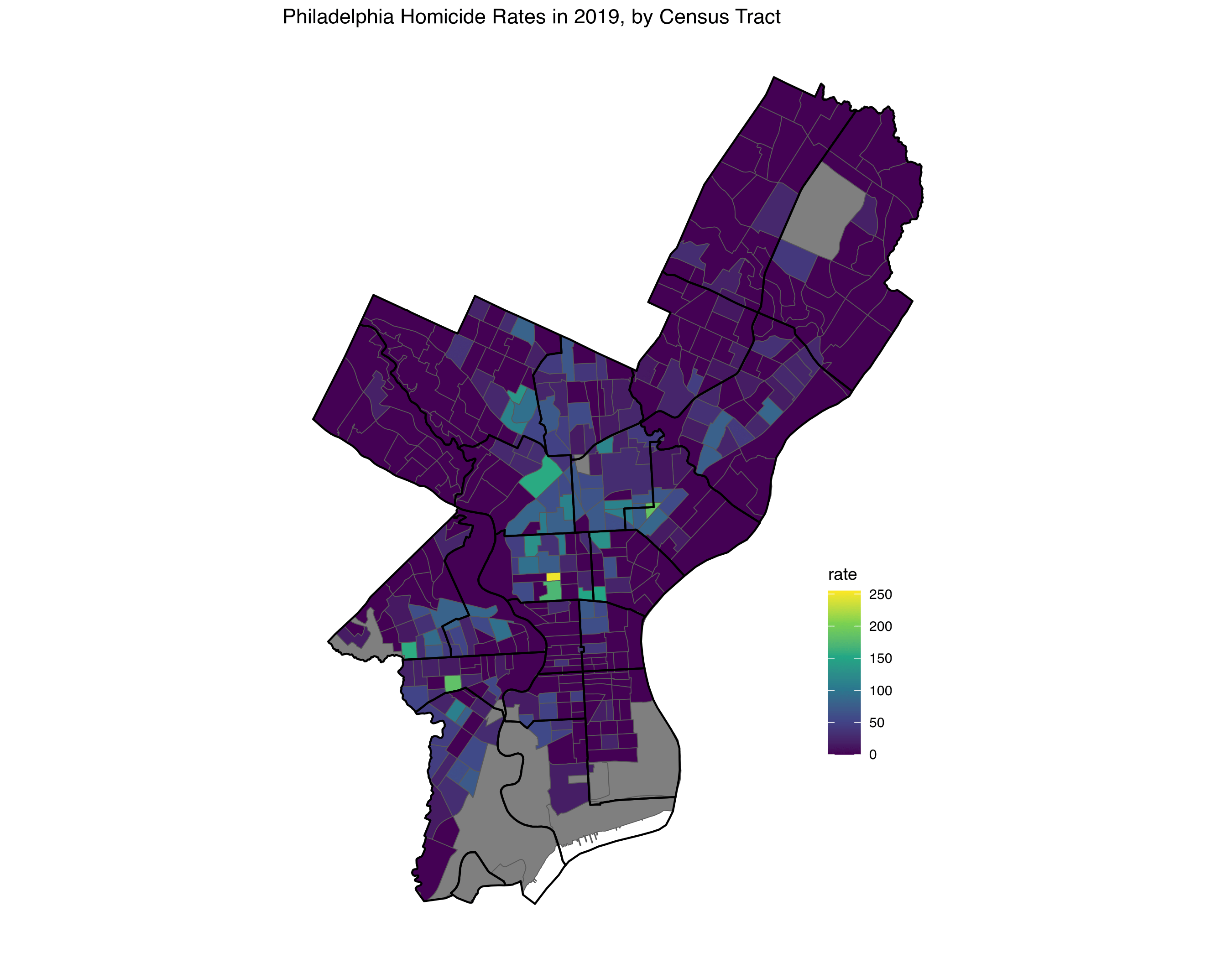
And the whole damn series from 2014 (the year the Ferguson effect started) to 2020
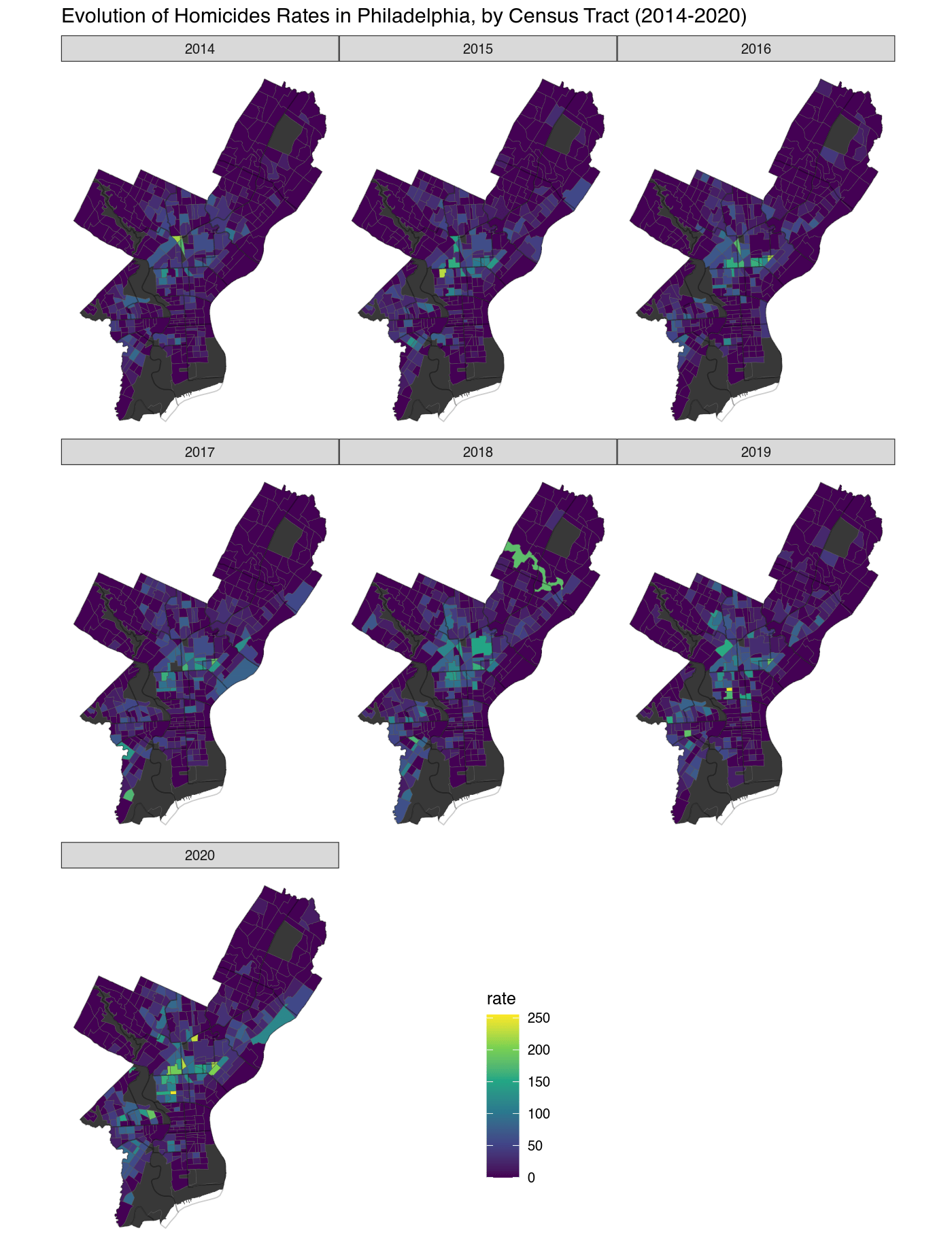
As it’s to be expected homicides have a high correlation with some demographic variables: Black and Hispanic neighborhoods, unmarried mothers, median male age and low household income.
